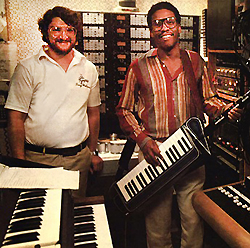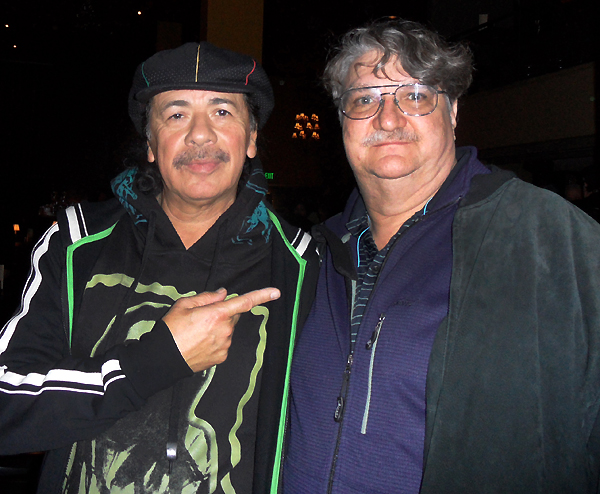
The challenge with VSOP, Hancock’s acoustic band, was different. “It was about translating their acoustic sound in a way that worked for up to 100,000 people,” he explains.
But his philosophy of mixing was the same regardless of the artist, he maintains: “My job was to get a balance and be invisible, to be a servant of the music and provide the technology to establish an emotional connection between the musicians and audience.”
In doing so, one gig stands out above the others: Joni Mitchell performing “Mingus” at the Greek Theatre in the late 1970s. “I’d designed and tuned the PA there and had it perfectly dialed in,” he says. “I actually met people 30 years later who’d seen that show and said it was the best they’d ever been to, and when someone remembers when you had a really good day, it’s very cool.”
Other artists he worked for over time include the Hawaiian band Kalapana as well as Carlos Santana, who offered him a job if he ever left Hancock. He eventually did and worked for Santana as manager of his sound company as well as a live mixer, electronics tech.
His next big gig was Neil Young in 1985. It was the first time Bell didn’t mix and do something else, working instead as a MIDI/computer tech and playing in the band on a few songs.
The Coming World
Bell’s work at the Greek and a variety of other venues was an offshoot of his founding Bryan Bell Productions in the mid-70s – a company that would ultimately become Synth-Bank, the first online database system for music, in 1984, and resulted in his spending far less time on the road. Initially Synth-Bank was intended as a backup provider for keyboard sounds, tour accounting files and other data, as well as a library providing sounds created by A-list artists to other musicians and an online community in the early days of the Internet.
“That business model didn’t work,” he says, “but it led to doing MIDI designs for acts like INXS and consulting for Michael Jackson, The Rolling Stones, Yes, ELP and others. I still made records, but there was so much demand for the designs that I couldn’t tour and mix house. I’d design a system, train a crew, send them out and then design the next.”
Bell has continued to consult for various artists, in addition to serving as outsourced chief technology officer for Domain Chandon and working on The Tonight Show from 1992 to 1994 as band engineer and sound designer when Jay Leno took over. Eventually, however, he decided to get out of the music business and learn more about the “coming world of technology.”
Consequently, from 1994 to 2000 Bell served as Strategic Technologist for The Frank Russell Company (currently Russell Investments) and continued his work with Russell Family Enterprises as outsourced CTO from 2000 to 2013. “The Russells were very supportive of me keeping my passion for music alive in side projects and community service,” he adds.
Bell has since returned to music and now, at 62, maintains contact with many of the artists he mixed, including Hancock, Santana and Young while also continuing to engineer and produce records, his first and most lasting passion. “A lot of what I made was built because we didn’t have the tools I wanted to make records,” he concludes. “But my main motivation for innovating, inventing, or whatever, was to serve artists.
“With VSOP, I used to pray before every show to just not screw it up – to not let the sound system get between the band and the audience. That’s challenging with an acoustic piano in a 60,000-seat stadium, but it’s the most amazing thing when you get it right.”
Based in Toronto, Kevin Young is a freelance music and tech writer, professional musician and composer.

